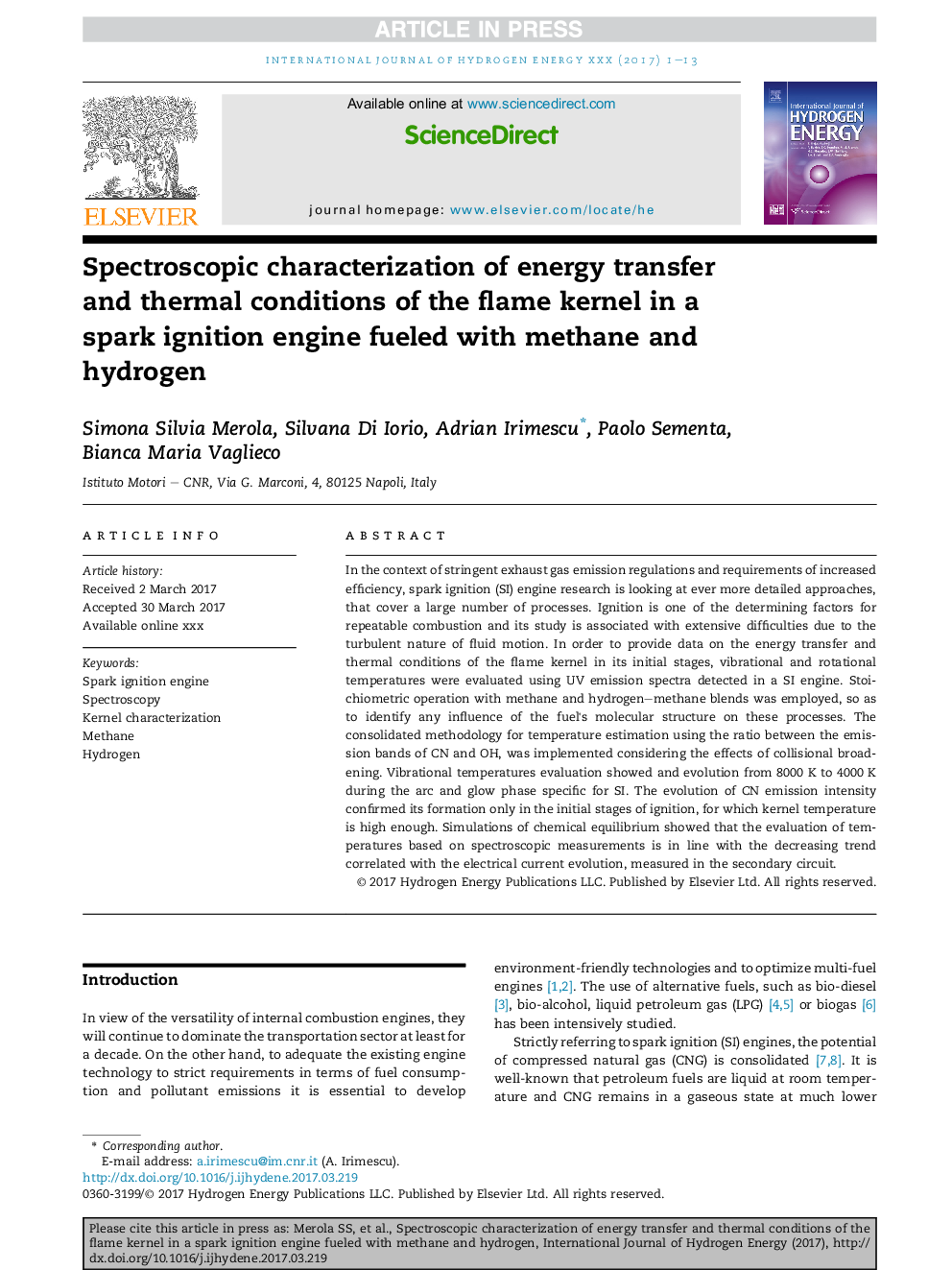| Article ID | Journal | Published Year | Pages | File Type |
|---|---|---|---|---|
| 5147514 | International Journal of Hydrogen Energy | 2017 | 13 Pages |
Abstract
In the context of stringent exhaust gas emission regulations and requirements of increased efficiency, spark ignition (SI) engine research is looking at ever more detailed approaches, that cover a large number of processes. Ignition is one of the determining factors for repeatable combustion and its study is associated with extensive difficulties due to the turbulent nature of fluid motion. In order to provide data on the energy transfer and thermal conditions of the flame kernel in its initial stages, vibrational and rotational temperatures were evaluated using UV emission spectra detected in a SI engine. Stoichiometric operation with methane and hydrogen-methane blends was employed, so as to identify any influence of the fuel's molecular structure on these processes. The consolidated methodology for temperature estimation using the ratio between the emission bands of CN and OH, was implemented considering the effects of collisional broadening. Vibrational temperatures evaluation showed and evolution from 8000Â K to 4000Â K during the arc and glow phase specific for SI. The evolution of CN emission intensity confirmed its formation only in the initial stages of ignition, for which kernel temperature is high enough. Simulations of chemical equilibrium showed that the evaluation of temperatures based on spectroscopic measurements is in line with the decreasing trend correlated with the electrical current evolution, measured in the secondary circuit.
Related Topics
Physical Sciences and Engineering
Chemistry
Electrochemistry
Authors
Simona Silvia Merola, Silvana Di Iorio, Adrian Irimescu, Paolo Sementa, Bianca Maria Vaglieco,
